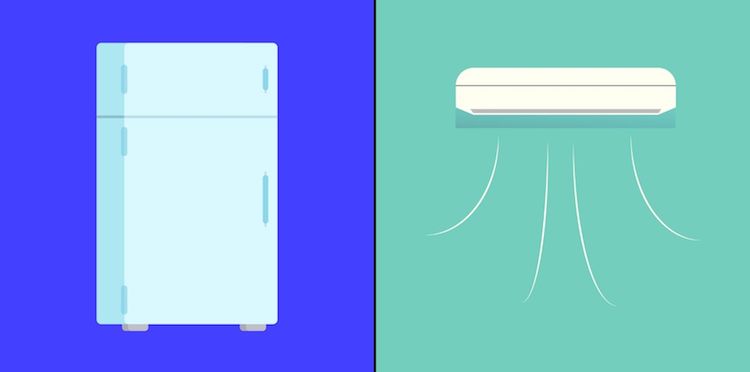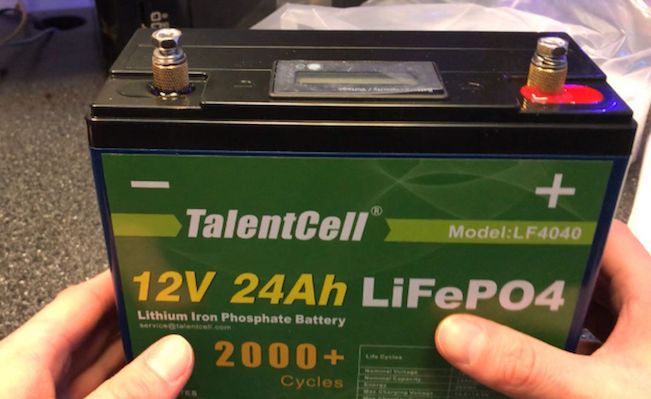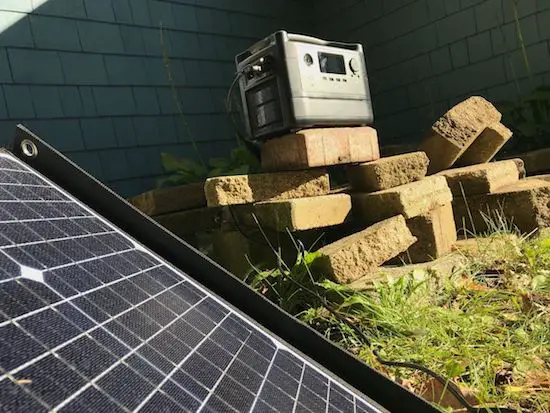Standby backup solar generators should be able to deliver all your necessary power needs during a blackout—or any other emergency. Deciding what type of solar generator to buy is dependent on these three factors:
- Daily Energy Consumption: How much energy will be needed to power your home appliances and how many hours will each of your devices/appliances run in a day?
- Inverter & Battery Requirements: How long will you be able to run your appliances before your batteries run out of power?
- Solar Panel Setup: How long will you have to charge your solar generator using solar panels before it is full (100%)?
Answering these questions or steps will help you determine the size of the solar generator you need.
STEP 1: Calculate Daily Energy Consumption
To estimate the size of the solar generator you need, you need to first calculate the average daily watt-hours required to power all essential appliances you need to run in a day.
Most appliances today have their voltage and power rating on their labels. To calculate the average daily power requirement for a device, you will have to:
- Look up each device’s power rating in watts: They are found on the label or somewhere on the device. If you cannot find them, check the power rating of the particular device online.
- Determine how many hours you will be using each device in a day.
- Multiply the number of hours by the power rating, and you will get the average daily power consumption (in watt-hours) for each appliance.
- Sum up the average daily watt-hours of all the devices/appliances to get the total average daily power consumption.
In the event of a blackout, most people want to power essential appliances until the power comes back on. A backup solar generator should be able to power the most critical appliances and should also be able to run them for as long as you need them.
Similar: Top 3 Most Powerful Solar Generators (Overview + Analysis)
What are your wattage requirements?
Power is measured in watts; therefore, to answer this question, you need to calculate the power rating that each of your devices needs to start and operate.
Why do we need this? This is in order to measure the right size inverter you need for your solar generator. The inverter converts DC power from the battery into AC power.
The manufacturer’s label should list the amperage, voltage, and in some cases the wattage of each appliance.
If you only find the amperage (A) and voltage (V) on the label, then multiply these together to get the wattage (W). This is the maximum power the appliance will use at any given time.
If you get the wattage on your appliance, then you’re good to go.
Here are some examples of typical wattages for various appliances:
- Refrigerators: 150-300W
- Microwaves: 900-1,200W
- Space Heaters: 1,500W
By adding these numbers up, we’ll get the maximum possible wattage of 3,000W. If we intend to run all three of these appliances at once, then we’ll need a solar generator with an inverter rated above 3,000W.
How long will each device/appliance run for?
The minutes or hours you run an appliance for allow you to multiply its power output (in watts) by the time (hours) to get watt-hours. Watt-hours (Wh) is what we’ll use to measure battery capacity for your solar generator.
Keep in mind that during a blackout, you will be using only your most important appliances, and you will most likely be using them for less time than usual. You will mostly be using a microwave (several times a day), a refrigerator, lighting, one or two laptops, CPAP, mobile phones, and a television or radio for a couple of hours.
If you intend to use your generator as a partial power source for your home to offset utility costs, then you can adjust your calculations for the entire day.
I’ll get into examples for both scenarios after discussing the next topic.
Measuring the run times of variable output appliances

Some appliances use different amounts of power while running. The two main examples of these are refrigerators and AC units.
Full-size fridges tend to consume about 150-300W maximum. This depends on the make, model, and age of your fridge, but most fridges have this average output. However, fridges don’t consume this much power throughout the entire day.
Instead, fridges consume about 80-100W per hour in a 24-hour time span. This is because they aren’t always running throughout the day. In total, the average fridge will consume about 2,000Wh of power per day.
If you want more accurate calculations for using fridges with solar generators, I have an article dedicated to this topic. I use data from multiple full-size fridges and pair them with three solar generators to calculate how long they can run. Find this post here: 3 Best Solar Generators for Your Fridge (With Run Times).
Estimating total watt-hours used (examples)
Let’s make two quick calculations. One for using appliances in a power outage and one for a full day.
The first example is measuring the power consumption of some appliances that may be used with a solar generator during a 3-hour power outage.
| Appliance/Consumption | Running Watts | Run Time | Total Watt-Hours Used |
|---|---|---|---|
| Refrigerator | 90W | 3 hours | 270Wh |
| Microwave | 1,000W | 10 min (0.17 hrs) | 170Wh |
| Lighting | 100W | 3 hours | 300Wh |
| Box Fan | 60W | 3 hours | 180Wh |
| Total | – | – | 920Wh |
This next example estimates the energy used from various home appliances after 24 hours. As you’ll see, this scenario would require a much larger battery to run successfully.
| Appliance/Consumption | Running Watts | Run Time | Total Watt-Hours Used |
|---|---|---|---|
| 50″ LED TV | 150W | 4 hours | 600Wh |
| Refrigerator | 90W | 24 hours | 2,160Wh |
| Microwave | 1,000W | 0.5 hours | 500Wh |
| Desktop Computer | 200W | 9 hours | 1,800Wh |
| Total | – | – | 5,060Wh |
With these examples, we now have the basic data we need to pick out the right size solar generator in terms of battery capacity and inverter capabilities.
STEP 2: Calculate Inverter & Battery Capacity Requirements
The next step will be to determine the output power and capacity needed to operate your essential appliances with a solar generator system.
More specifically, we’re looking for:
- AC inverter size
- Battery capacity
Inverter sizing
Using the same examples mentioned prior, I’ll add up the wattage when all appliances are being used at once to get the maximum wattage required.
Power outage example:
- Refrigerator: 90W
- Microwave: 1,000W
- Lighting: 100W
- Box fan: 60W
- Total: 1,250W
24-hour example:
- 50″ LED TV: 150W
- Refrigerator: 90W
- Microwave: 1,000W
- Desktop Computer: 200W
- Total: 1,440W
Both of these scenarios require an inverter capable of at least 1,500W. However, it’s best to aim a little higher to create a good buffer in case there’s a higher power requirement. For these examples, a 1,800W inverter is ideal.
Similar: 3 Best 1,000W Solar Generators (Complete Analysis)
Battery capacity requirements

Nearly all solar generator companies list their models’ battery capacities in watt-hours. If you only see amp-hours, multiply the amp-hours by the battery voltage (typically 12V or 24V).
Taking the watt-hour totals from our examples, the total was 920Wh for a three-hour power outage and 5,060Wh for a 24-hour period. Similar to the inverter sizing, you want to have a buffer of battery capacity (typically 35%).
This is in order to factor in:
- Depth of discharge or DoD: This is the amount of battery used compared to the remaining battery life. Some solar generators can use 100% of their battery, but others don’t in order to protect and prolong the battery. The ideal balance is about an 80% DoD before recharging.
- Inverter efficiency (typically 85%): The inverter consumes power from the battery while it converts DC to AC power. In most cases, you can expect 85% efficiency.
Using our examples, we can factor in the buffer above the find the ideal battery capacity.
20% of battery remaining + 15% battery lost from inverter = 35% of total capacity
Power outage backup power scenario:
920Wh used x 0.35 = 322Wh
920Wh + 322Wh = 1,242Wh
1,242Wh or higher = ideal capacity
24-hour scenario:
5,060Wh used x 0.35 = 1,771Wh
5,060Wh + 1,771Wh = 6,831Wh
8,831Wh or higher = ideal capacity
These estimates, however, can still be dependent on whether your solar generator can recharge while it is being used or not. If it can do this, then it may not need as much battery capacity.
STEP 3: Find the Ideal Solar Panel Setup for Your Batteries

Most backup solar generators are built to remain fully charged until they are needed. Then you can power your appliances through the batteries until you need to recharge again.
There are, however, backup solar generators that allow the charging of batteries through solar power while the batteries are still used to power your appliances. This is also called pass-through charging.
If you opt for a solar generator that can utilize pass-through charging, there are a few steps to take to find out how much battery life you can offset.
Solar panel setup – How to calculate recharging power
- Calculate your total solar panel wattage: add the power ratings of all panels you intend to use.
- Be sure that you’re within the allowable voltage/amperage range of your charge controller.
- With the ideal angle towards the sun and in ideal sunlight conditions, estimate or measure the actual output from the solar panel array.
- In my experience, most good solar panels output 70-80% of their rated wattage. For example, a 12V 100W panel brings in 70-80W in good sun.
- Multiply the actual solar output by five.
- This is the average number of hours of prime sunlight that you’ll get to your panels on a clear, sunny day.
- The result you get (in watt-hours) can be used to offset the battery life lost from powering your appliances.
These steps are specific for calculating a solar array on your property, but there are additional steps like permits, financing, and installation that are part of the process. For information on the whole process, I recommend reading energy.gov’s home solar guide for a general layout.
Other Factors That Should Be Considered
Other factors to consider when purchasing a solar generator include:
- The proximity of solar panels to a portable power station – The closer the better.
- Using an integrated mobile application to optimize your setup – Companies like EcoFlow, Goal Zero, and Bluetti include this option with several of their models.
- Power output port options – Make sure the model you want has all of the ports you need.
- The option of expanding its battery capacity – If you eventually decide to increase the size of your system, you just need to add batteries.
Below I have some comparisons of solar generators from different brands. These companies have models in several different sizes, so you can review what size is ideal for you:
- Bluetti vs. EcoFlow – Collective Solar Generator Deep Dive
- Goal Zero vs. Jackery – Battle of the Brands (Cost/Specs/Analysis)
- Bluetti vs. Goal Zero – Solar Generator Matchup (In-Depth)
Can You Run a Solar Generator Continuously?
As a general rule, you can run a solar generator continuously if it has pass-through charging. This allows you to charge/discharge it simultaneously. In addition, its battery capacity and recharging input must be high enough to maintain a steady flow of power to your devices/appliances.
The charging rate from pass-through charging, the battery size, and the appliances you’re powering all factor into continuous power.
Similar: Can You Charge an Electric Car With a Solar Generator?
